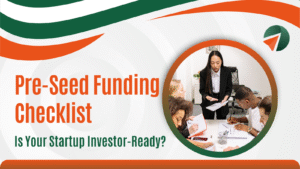Fundraising hasn’t gotten any easier, but it has gotten smarter. Investors have become more selective, market signals shift faster, and capital flows concentrate around clear, defensible advantages (AI, deep tech, climate, healthcare). Still, the startups that combine product-market fit, crisp storytelling, sound metrics, and the right investor relationships continue to raise rounds-sometimes faster and at better terms than in the frothier years before.
Practical playbook to help you win early-stage funding for startups
- Begin with a measurable signal: Traction > Promise
Investors today want to see measurable evidence, not undefined potential. Traction may look different depending on the business model:
SaaS: revenue growth, net retention, payback period, and CAC trends.
Marketplaces: GMV growth, retention of both supply and demand sides, and unit economics.
Consumer: Cohort LTV, CAC, and repeat engagement metrics.
Deep tech: working prototypes, results of pilot studies, or LOIs.
Crunchbase found that, on the whole, global VC funding saw strong H1 2025 activity. Still, early-stage investors want to double down on founders who demonstrate repeatability in demand. See additional context via Crunchbase’s 2025 mid-year-round-up.
Source: Crunchbase- State of Startups, H1 2025
- Tell a crisp, defensible story – and back it with metrics
Narrative matters- but it has to be credible. Your pitch should answer three investor questions in the first five minutes:
- What problem are you solving and for whom?
- Why now – what changed in the market/tech/ regulation that creates an opportunity?
- How are you going to win it and defend this lead-moat?
Support the story with two to three metrics that matter most to your model. For instance, this might be an AI data-labeling SaaS showing growth in paying customers and average revenue per customer, plus one concrete case study proving cost savings for a pilot customer.
- Select the appropriate fundraising channel
Don’t scatter-shot your outreach. Today, the investor landscape includes traditional angels and VCs, micro-funds, corporate venture arms, plus an active ecosystem of specialized funds for AI, climate, biotech, and more.
Practical channels for early stage startup fundraising:
- Warm intros via founders, advisors, and portfolio founders.
- Syndicate angels for pre-seed checks are helpful in validating the concept.
- Look for Vertical specialist funds as they add domain credibility and customer intros.
- Accelerators or corporate pilots for product validation and pilot revenue.
- Demonstrate defensible unit economics, even if small
Unit economics are your shorthand for sustainability. Investors want to see a path to positive unit economics as you scale. Demonstrate:
- CAC payback < 12 months for SaaS or explain why a longer payback is acceptable.
- Gross margins that allow reinvestment into growth.
- Clear levers to improve margins: pricing rules, automation, upsells.
Even if you are pre-revenue, show validated customer acquisition channels and LTV/CAC models built from pilot customers or beta tests.
- Create a checklist for governance and legal hygiene
Investors conduct legal and financial diligence speedily. Make sure these are ready well before you pitch:
- Cap table, option pool, and investor preference clarity.
- Incorporation documents, IP assignment/ownership, and key contracts (customer & vendor).
- Clear founder vesting and roles.
- Basic financial model and 12-month cash plan.
- Poor legal hygiene kills momentum and trust. Startups should treat diligence as part of productization.

- Prepare a smart, realistic ask
Be specific. Break down how you’ll spend the funds and what milestones you’ll hit. Common early stage asks vary by market, but investors expect clarity on:
- Runway generated (in how many months).
- Milestones linked to valuation or next round: Revenue target, pilots, and regulatory milestones.
- Use of proceeds: product, hiring, GTM, legal.
Investors like small, milestone-tied raises, not some vague, open-ended asks-especially post-2022 market reset.
- Leverage data and ecosystem signals
Use public data to benchmark and build credibility. Demonstrate that you understand where the market is going-for instance, which geographies are getting more early-stage checks, which sectors are hot (AI still dominates), and where valuations sit.
- Polish founder readiness and team story
They invest in teams first and ideas later. Demonstrate complementary skills with past founder or industry experience, in addition to a realistic hiring plan. If you’re a solo founder, describe a plan to hire a technical or GTM co-founder quickly; if possible, bring on a credible advisor or fractional CTO early to fill trust gaps.
- Close the loop with traction after the pitch.
Follow up after meetings with updated data: new customers, press mentions, pilot results, LOIs, etc. Momentum matters-investors routinely move from “maybe” to “yes” as they see progress during the diligence window.
Final thoughts
Securing early-stage funding for startups in 2025 is less about mastering one single trick; rather, it’s combining product proof, data-driven storytelling, right-fit investor outreach, and clean operations. Take the ecosystem signals-Crunchbase’s funding snapshots, Startup Genome’s ecosystem mapping-to position your ask, but remember, fundraising is still a human process. Build relationships, move fast on evidence, and sell a future that investors can model and believe in.






